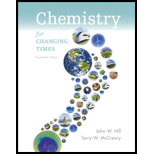
(a)
Interpretation:
Provide a name to  ion.
ion.
Concept introduction:
An ion is a group of atoms and atoms where the number of the proton is different from the number of electrons. A positive ion or a cation is known as where the proton’s numbers are greater than the electrons. A negative ion or anion is known as where a number of electrons are more than the number of protons.
When an atom donates an electron, it has a positive charge and when an atom accepts the negative charge then it has a negative charge.
(b)
Interpretation:
Provide a name to  ion.
ion.
Concept introduction:
An ion is a group of atoms and atoms where the number of the proton is different from the number of electrons. A positive ion or a cation is known as where the proton’s numbers are greater than the electrons. A negative ion or anion is known as where a number of electrons are more than the number of protons.
When an atom donates an electron, it has a positive charge and when an atom accepts the negative charge then it has a negative charge
(c)
Interpretation:
Provide a name to  ion.
ion.
Concept introduction:
An ion is a group of atoms and atoms where the number of the proton is different from the number of electrons. A positive ion or a cation is known as where the proton’s numbers are greater than the electrons. A negative ion or anion is known as where a number of electrons are more than the number of protons.
When an atom donates an electron, it has a positive charge and when an atom accepts the negative charge then it has a negative charge
Want to see the full answer?
Check out a sample textbook solution
Chapter 4 Solutions
Chemistry For Changing Times (14th Edition)
 ChemistryChemistryISBN:9781305957404Author:Steven S. Zumdahl, Susan A. Zumdahl, Donald J. DeCostePublisher:Cengage Learning
ChemistryChemistryISBN:9781305957404Author:Steven S. Zumdahl, Susan A. Zumdahl, Donald J. DeCostePublisher:Cengage Learning ChemistryChemistryISBN:9781259911156Author:Raymond Chang Dr., Jason Overby ProfessorPublisher:McGraw-Hill Education
ChemistryChemistryISBN:9781259911156Author:Raymond Chang Dr., Jason Overby ProfessorPublisher:McGraw-Hill Education Principles of Instrumental AnalysisChemistryISBN:9781305577213Author:Douglas A. Skoog, F. James Holler, Stanley R. CrouchPublisher:Cengage Learning
Principles of Instrumental AnalysisChemistryISBN:9781305577213Author:Douglas A. Skoog, F. James Holler, Stanley R. CrouchPublisher:Cengage Learning Organic ChemistryChemistryISBN:9780078021558Author:Janice Gorzynski Smith Dr.Publisher:McGraw-Hill Education
Organic ChemistryChemistryISBN:9780078021558Author:Janice Gorzynski Smith Dr.Publisher:McGraw-Hill Education Chemistry: Principles and ReactionsChemistryISBN:9781305079373Author:William L. Masterton, Cecile N. HurleyPublisher:Cengage Learning
Chemistry: Principles and ReactionsChemistryISBN:9781305079373Author:William L. Masterton, Cecile N. HurleyPublisher:Cengage Learning Elementary Principles of Chemical Processes, Bind...ChemistryISBN:9781118431221Author:Richard M. Felder, Ronald W. Rousseau, Lisa G. BullardPublisher:WILEY
Elementary Principles of Chemical Processes, Bind...ChemistryISBN:9781118431221Author:Richard M. Felder, Ronald W. Rousseau, Lisa G. BullardPublisher:WILEY





